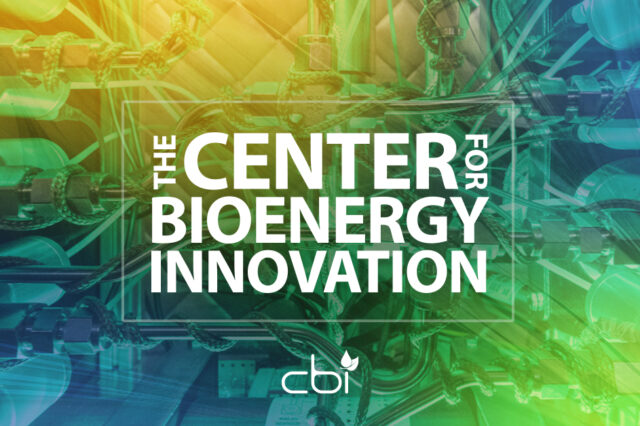
Researchers engineered microbes to better convert inexpensive, woody plants into lactic acid.
Researchers working with the Center for Bioenergy Innovation have engineered a microbe to better produce lactic acid, which is valuable both economically and environmentally. A bacterium that was improved using laboratory-assisted evolution could eventually help supply the rapidly expanding lactic acid market.
Beyond its traditional applications in pharmaceuticals, makeup, and food preservatives, lactic acid is also important in the production of biodegradable plastic polymers, polylactides. These plastics have promise for replacing common oil-based materials that are a leading environmental threat to ecosystems. Unfortunately, the high price of lactic acid makes polylactide manufacturing too expensive to be viable on a wide scale.
The practice of making lactic acid by fermenting the sugars in food crops, such as corn, is undesirable when considering ethical and economic factors. Scientists are instead focusing on cellulosic feedstocks such as wood chips and corn stalks, which are plentiful and currently have little market value. However, these feedstocks have stems strengthened by lignocellulose, which is difficult to break down.
“Even though the processes for converting sugar to polylactic acid are really well defined, the processes for converting lignocellulosic biomass to polylactic are not well understood,” said Daniel Olson, research assistant professor at Dartmouth College.
The standard approach is to pretreat woody lignocellulosic feedstocks with chemicals that break down the tough bonds within the material, Olson said. However, this process is expensive and often self-defeating: it triggers chemical changes that make creating the final product more difficult, whether targeting ethanol or, in this case, lactic acid.
Researchers at Dartmouth have been studying Clostridium thermocellum, a bacterium with potential to produce lactic acid directly from inexpensive, woody feedstocks. “It’s very good at consuming lignocellulosic biomass,” said Olson. “For years, we’ve been bioengineering it to produce ethanol, but lactate is another potentially useful chemical.”
Lactate has previously been a secondary product of bacteria that grow without oxygen; usually, lactic acid is produced only after the ethanol production pathway is blocked, Olson said. Focusing on maximizing lactic acid rather than ethanol as the primary product is a relatively new approach.
However, there’s a hitch: the wild type of Clostridium thermocellum does not grow well in the presence of the acids it produces. The bacterium will not be cost-efficient in producing biodegradable plastic unless it becomes more acid-tolerant.
“I think the problems that we’re facing related to product formation are simpler than the problems related to lignocellulose deconstruction,” Olson said. “People have been studying metabolism for a lot longer than they’ve been studying the deconstruction of lignocellulose, and the tools that we have are better.”
Using those tools, Olson’s laboratory team collaborated with visiting scientist Roberto Mazzola, a lactic acid expert from Italy’s University of Torino. Researchers evolved new strains of Clostridium thermocellum in the lab. This method allows the microbes to reproduce many generations rapidly, producing mutations that evolve into new characteristics. Researchers then looked for mutations that the different strains had in common, which are indicators of convergent evolution toward more acid tolerance. According to their recently published results, the researchers found that one evolved strain demonstrated more than twice as much lactate tolerance, without reducing lactic acid production. This strain serves as a starting point for further metabolic engineering, bringing biodegradable plastics a step closer.
The Center for Bioenergy Innovation at Oak Ridge National Laboratory is one of four Department of Energy Bioenergy Research Centers focused on advancing biofuels and bioproducts for a vibrant domestic bioeconomy. CBI is accelerating the development of bioenergy-relevant plants and microbes to enable production of drop-in sustainable aviation fuel, bioproducts that sequester carbon, and sustainable replacements for plastics and other environmentally harmful products. CBI research is supported by the Biological and Environmental Research program in DOE’s Office of Science.
